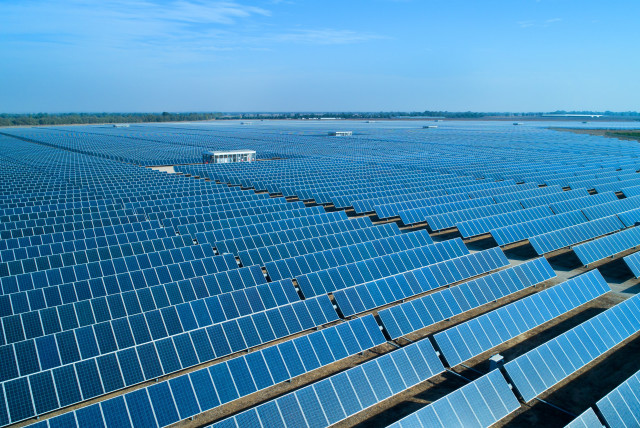Israeli gov't to invest NIS 100 million in energy efficiency projects

The new projects are part of an Israeli government decision to be more energy efficient and increase renewable energy use on government properties, thereby significantly reducing costs.
Twenty-two government offices and authorities will receive a collective NIS 100 million over the next two years to carry out more than 70 energy efficiency projects on government properties, the Energy and Finance ministries announced Monday.
Projects will be carried out at the Education, Agriculture and Housing ministries, as well as at other government authorities, such as the Police, Prison and Federal Aviation authorities and the Volcani Institute.
“The Energy Ministry is investing many resources in leading the way toward an energy economy clean of emissions and achieving government goals on renewable energy,” said Energy Ministry Director-General Kobi Blitstein, noting that as ministries become more energy efficient, they can serve as models for other organizations that could follow.
“This is a significant step toward reducing greenhouse gas emissions from the government sector,” he concluded.
How will the Israeli government pick which energy efficiency projects will be used?
To determine which projects would be implemented, a ministerial committee led by the Energy and Finance ministries in coordination with the Prime Minister’s Office and the Environmental Protection Ministry put out a call for proposals.
The committee received 141 proposals worth NIS 246 million for projects that ranged from improving lighting systems and replacing air conditioners to installing energy management and thermosolar systems. The committee then prioritized the projects and ranked them according to their necessity, cost and the technological ability to implement them.
The new projects are part of a government decision to be more energy efficient and increase renewable energy use on government properties, thereby significantly reducing costs. They also will help the government reach its goal of better maximizing public funds and integrating renewable energy into the Israeli economy.
Only around 12% of Israel’s energy mix comes from renewables. Several reports by Israeli and international experts have recently been published highlighting Israel’s ineffective policies for reducing greenhouse gas emissions and moving to clean energy. The country has yet to pass a climate law, which environmental activists and experts say is essential for achieving such goals.
“We welcome the government’s progress in the field of energy efficiency and call on them to lead by example for significant progress by establishing large scale solar energy infrastructure and storage systems in all government ministries, state-owned enterprises and security forces,” said Rony Erez, co-director of the Heschel Center for Sustainability.
The first NIS 33 million will be used in 2023, and the remaining NIS 67 m. in 2024. Implementing the projects is expected to lead to annual savings of NIS 28 m. in energy expenditures and to reduce emissions in the government sector.
“In coordination with the projects that were authorized, we expect that within three and a half years, we will receive a return on our investment, and the State of Israel will receive the dividends for investing wisely,” according to Finance Ministry Accountant-General Yaheli Rottenburg. “This plan joins a series of steps [being taken] to deal with the climate crisis and reduce the use of fossil fuels.”
Rottenburg added that an additional aim was to shift government cars to electric ones.
The Environment and Climate Change portal is produced in cooperation with the Goldman Sonnenfeldt School of Sustainability and Climate Change at Ben-Gurion University of the Negev. The Jerusalem Post maintains all editorial decisions related to the content.
Jerusalem Post Store
`; document.getElementById("linkPremium").innerHTML = cont; var divWithLink = document.getElementById("premium-link"); if (divWithLink !== null && divWithLink !== 'undefined') { divWithLink.style.border = "solid 1px #cb0f3e"; divWithLink.style.textAlign = "center"; divWithLink.style.marginBottom = "15px"; divWithLink.style.marginTop = "15px"; divWithLink.style.width = "100%"; divWithLink.style.backgroundColor = "#122952"; divWithLink.style.color = "#ffffff"; divWithLink.style.lineHeight = "1.5"; } } (function (v, i) { });

